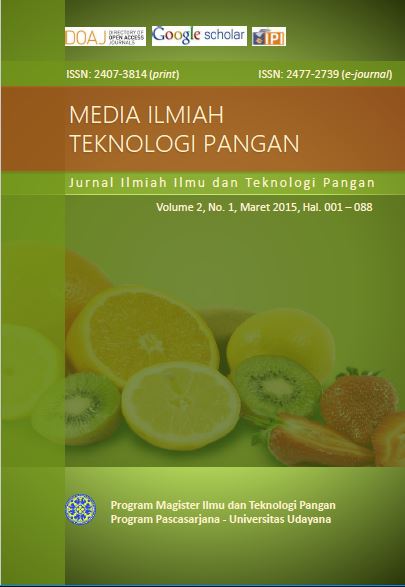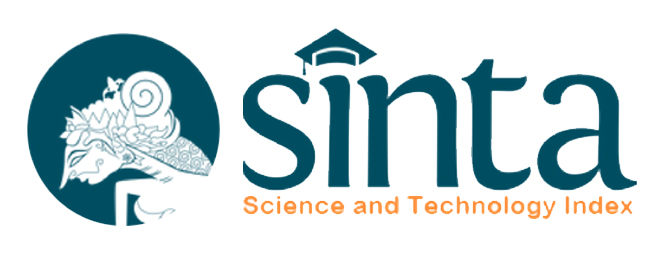Pemotongan dan Menyambung DNA dalam Kloning Gen, Studi pada Kloning Gen Prolidase dari Bakteri Asam Laktat
Abstract
Gene cloning in lactic acid bacteria (LAB) is crucial in term to increase their ability to hydrolyze milk protein such as proline. This proline could be hydrolyzed when the LAB undergone cloning on their genome coding the enzyme. The cloning process need technology to separate/isolate the gene capable of proline hydrolyze. Isolation of DNA containing prolidase gene, need DNA genome cutting. After isolation of DNA gene coding prolidase, it is then recombined with other bacterial DNA to obtained recombinant gene. The process need ligase. In gene cloning, knowledge of cutting and joining the DNA should be understood.
The enzyme take the role in cutting and joining the DNA were restriction endonuclease and ligase. The restriction enzyme function (1) in inserting a gen into plasmid contained in a vector during gene cloning, and gene expression experiment, and (2) to identify the gene. It is important that the researcher already have standardized sequenced gene as control. The DNA contained target gene was cut using some restriction enzyme, then the gene was arrayed in electrophoresis gel using southern blot technique. DNA sequence was elucidated by addition of ethydium bromide. To identify/characterize the isolated gene, this DNA sequence was encountered the control DNA.
Downloads
References
Anonymousb. 2008. Restriction enzyme. http://en.wikipedia.org/wiki/Restriction_enzyme.
Anonymousc. 2008. Polymerase chain reaction. Wikipedia the encyclopedia. http://en.wikipedia.org/wiki/Polymerase_chain_reaction.
Anonymousd. 2008. Polymerase chain reaction. From creation wiki, the encyclopedia of certain science. http:// creationwiki.org/Polymerase_chain_reaction.
Axelson,L. 1998. Lactic acid bacteria.: classification and physiology, p. 1-72 In Salminen, S. dan A. von Wright (ed.), Lactic acid bacteria. Marcel Dekker,Inc, New York, USA.
Barnum, S.R. 2005. Biotechnology. An introduction. 2nd ed. Thompson books/cole. Australia, Canada, Mexico, Singapore, Spain, UK, USA.
Chawla, H.S. 2002. Introduction to plant biotechnology. Science Pub. Inc. USA, Plymouth, UK.
Hadi, S. 2005. Karaterisasi fragmen DNA gen glukoamilase (GLU1) produk PCR dengan analisis restriksi. Berk. Penel. Hayati: 11 (81-79).
Rahman,A.,S.Fardiaz, W.P. Rahayu, Suliantari dan C.C. Nurwitri. Teknologi Fermentasi Susu. Depdikbud, Ditjen Dikti. PAU Pangan dan Gizi. IPB. Bogor.
Richana, N. dan A. Thontowi. 2002. Kajian ekspresi gen a-amylase untuk mendapatkan isolate bakteri rekombinan pembawa gen a-amylase. Prosiding seminar Hasil Penelitian Rintisan dan Bioteknologi Tanaman. Bogor 26-27 Desember 2001.
Sambrook, J., E.F. Fritsch dan T. Maniatis. 1989. Molekular cloning. A Laboratory manual. CSH Laboratory Press.
Suriasih, 2005. Occurrence, properties and interaction of bacteria in Camembert and Blue Veined Cheese. Thesis S2 The University of New South Wales.
Stanley,G. 1995. Cheeses, p. 263-304. In Wood,J.B. (ed.) Microbiology of fermented foods. Blackie Acad &Prof. London, New York.
Yuwono, T. 2008. Bioteknologi Pertanian. Gajah Mada University Press.








